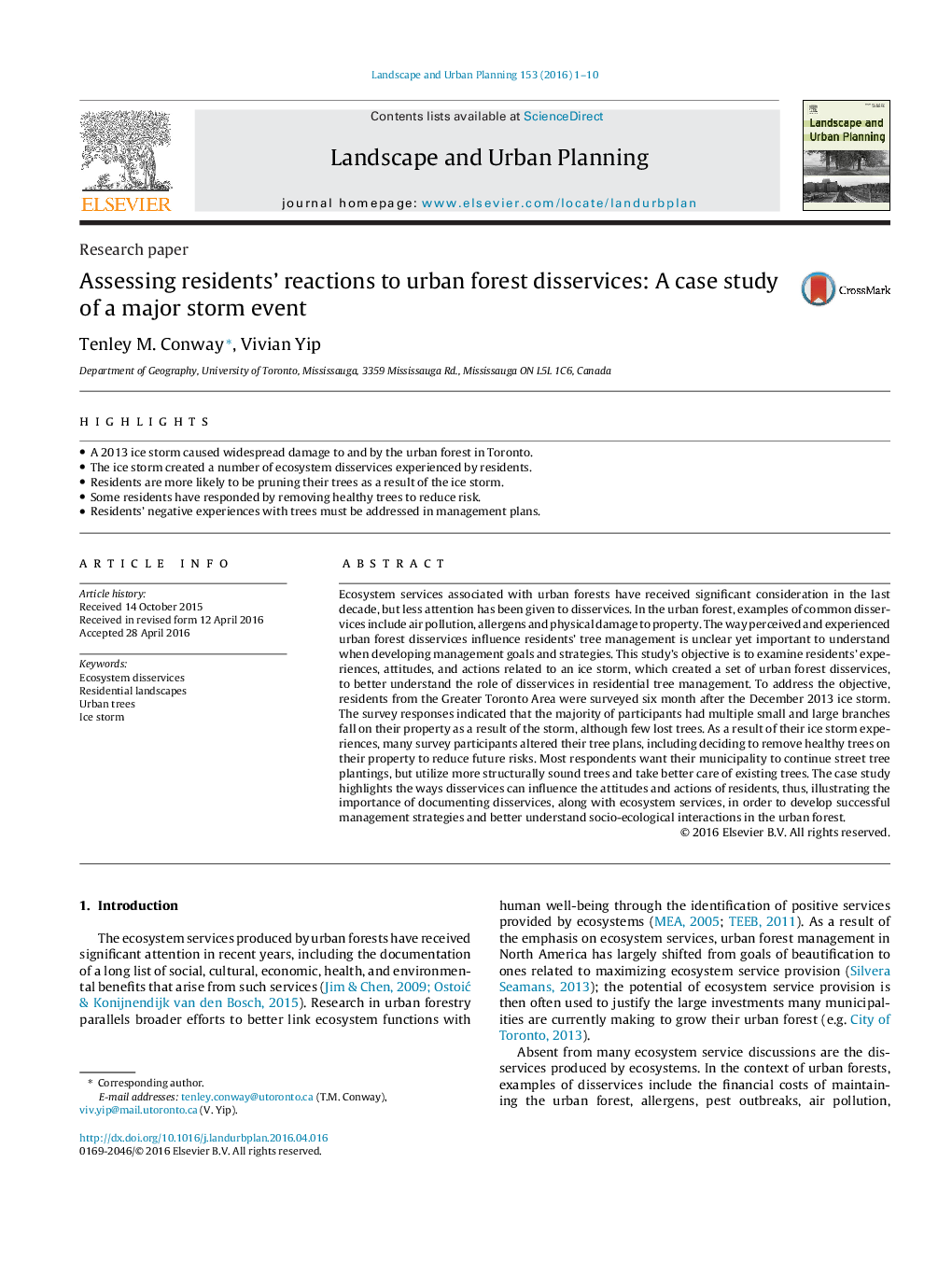| Article ID | Journal | Published Year | Pages | File Type |
|---|---|---|---|---|
| 7460506 | Landscape and Urban Planning | 2016 | 10 Pages |
Abstract
Ecosystem services associated with urban forests have received significant consideration in the last decade, but less attention has been given to disservices. In the urban forest, examples of common disservices include air pollution, allergens and physical damage to property. The way perceived and experienced urban forest disservices influence residents' tree management is unclear yet important to understand when developing management goals and strategies. This study's objective is to examine residents' experiences, attitudes, and actions related to an ice storm, which created a set of urban forest disservices, to better understand the role of disservices in residential tree management. To address the objective, residents from the Greater Toronto Area were surveyed six month after the December 2013 ice storm. The survey responses indicated that the majority of participants had multiple small and large branches fall on their property as a result of the storm, although few lost trees. As a result of their ice storm experiences, many survey participants altered their tree plans, including deciding to remove healthy trees on their property to reduce future risks. Most respondents want their municipality to continue street tree plantings, but utilize more structurally sound trees and take better care of existing trees. The case study highlights the ways disservices can influence the attitudes and actions of residents, thus, illustrating the importance of documenting disservices, along with ecosystem services, in order to develop successful management strategies and better understand socio-ecological interactions in the urban forest.
Related Topics
Life Sciences
Agricultural and Biological Sciences
Ecology, Evolution, Behavior and Systematics
Authors
Tenley M. Conway, Vivian Yip,
